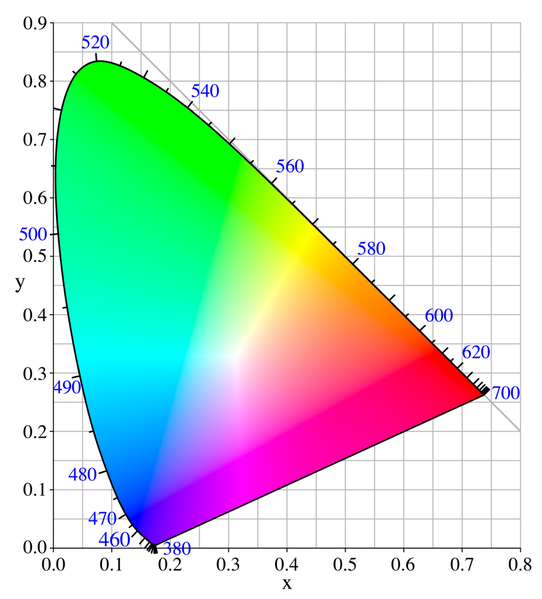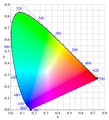Lahabali kɔligu:CIExy1931.png

Jɔhiyuli maa galisim:542 × 599 anfooni bihi bihi. Din pahi resolutions: 217 × 240 anfooni bihi bihi | 434 × 480 anfooni bihi bihi | 695 × 768 anfooni bihi bihi | 1,140 × 1,260 anfooni bihi bihi.
Faal maa maŋmaŋa (1,140 × 1,260 pixels, file size: 327 KB, MIME type: image/png)
Faal tarihi
Dihimi dabisili/saha n-nya kɔl' bihi kamani di ni di yina shɛm
| Zuŋɔ dabisili/Saha | Thumbnail | Di tarisi | ŋun su | tɔhibu | |
|---|---|---|---|---|---|
| din na chana | 07:17, 21 Silimin gɔli June 2005 |  | 1,140 × 1,260 (327 KB) | PAR~commonswiki | CIE 1931 xy chromaticity diagram |
Lahibali kɔligu zaŋ tum tuma
Din doli ŋɔ na yaɣili tuma nima zaŋ ti lahabali kɔligu ŋɔ:
Duniya zaa lahabali kɔligu zaŋ tum tuma
Wikis shɛŋa ŋan dolina ŋɔ gba malila faal ŋɔ n kuri bukaata:
- Zaŋ tum tuma ar.wikipedia.org zuɣuc
- Zaŋ tum tuma ar.wikibooks.org zuɣuc
- Zaŋ tum tuma ba.wikipedia.org zuɣuc
- Zaŋ tum tuma be-tarask.wikipedia.org zuɣuc
- Zaŋ tum tuma be.wikipedia.org zuɣuc
- Zaŋ tum tuma bg.wikipedia.org zuɣuc
- Zaŋ tum tuma bh.wikipedia.org zuɣuc
- Zaŋ tum tuma bn.wikipedia.org zuɣuc
- Zaŋ tum tuma ckb.wikipedia.org zuɣuc
- Zaŋ tum tuma da.wikipedia.org zuɣuc
- Zaŋ tum tuma en.wikipedia.org zuɣuc
- Purple
- International Commission on Illumination
- Talk:RGB color model
- Template:Infobox color
- Glossary of machine vision
- Wikipedia:Featured picture candidates/February-2007
- Wikipedia:Featured picture candidates/CIExy1931.png
- User talk:Sakurambo/Archive Aug 2007
- Template:Infobox color/doc
- Impossible color
- Template:Infobox color/sandbox
- Wikipedia talk:WikiProject Color/Archive 6
- Ekta Space
- Zaŋ tum tuma en.wikibooks.org zuɣuc
- Zaŋ tum tuma eo.wikipedia.org zuɣuc
- Zaŋ tum tuma es.wikipedia.org zuɣuc
- Zaŋ tum tuma fa.wikipedia.org zuɣuc
- Zaŋ tum tuma fo.wikipedia.org zuɣuc
- Zaŋ tum tuma he.wikipedia.org zuɣuc
- Zaŋ tum tuma hi.wikipedia.org zuɣuc
- Zaŋ tum tuma hu.wikipedia.org zuɣuc
- Zaŋ tum tuma id.wikipedia.org zuɣuc
- Zaŋ tum tuma ja.wikipedia.org zuɣuc
Yulima more global usage zaŋ chaŋ lahabali kɔligu ŋɔ.



![{\displaystyle [X,Y,Z]=[x,y,1-x-y]}](https://wikimedia.org/api/rest_v1/media/math/render/svg/128ce0351ad8831b3dbf7456aff7c6f5f7f3f0ab)
